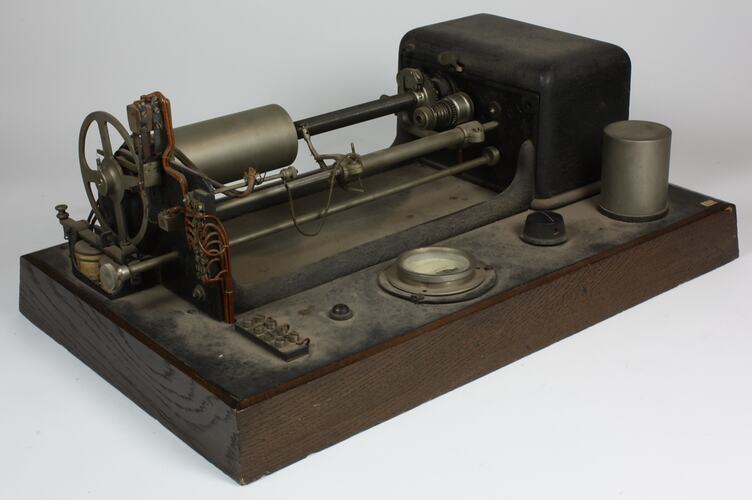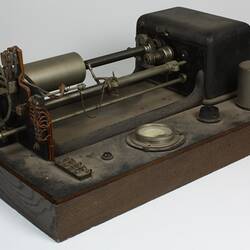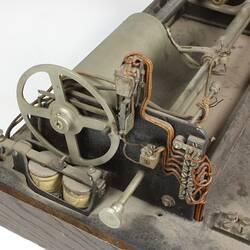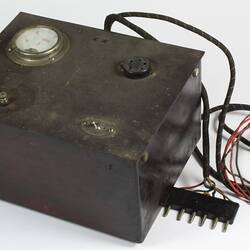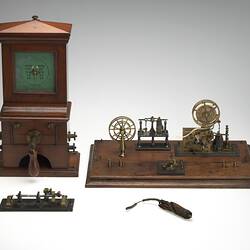Summary
Similar to a Fultograph radio facsimile receiver. Manufactured by Television and Radio Laboratories (later Radiovision) in Melbourne in 1929.
This was the first commercial picture reception machine used in broadcast facsimile tests by the Melbourne radio stations 3DB and 3UZ, and Sydney station 2UE, between 1929 and 1932. The machine was probably used in company director Macdonald's home in Sandringham. The transmitted picture was reconstructed at the receiving end on special paper treated with potassium iodide. The device was powered by a clockwork motor, similar to that used in a gramophone.
It is interesting to note that the manufacturer included the word 'television' in their name as early as 1929.
Physical Description
Rectangular wooden base with driving mechanism and clockwork motor covered by metal case. Shaft carrying rotating metal drum with clamp to hold chemically treated paper. Milliiammeter (0-10 milliamps) on base plate. Cylindrical cover over socket on base, possibly for a vacuum tube.
More Information
-
Collection Names
-
Collecting Areas
-
Acquisition Information
Donation from The Examiner, 07 Dec 1937
-
Manufacturer
-
Inscriptions
None apart from markings on milliammeter and a component.
-
Classification
-
Category
-
Discipline
-
Type of item
-
Exhibition Collection Management
335 mm (Length), 503 mm (Width), 200 mm (Height)
-
Overall Dimensions
520 mm (Length), 320 mm (Width), 210 mm (Height)
-
Keywords
